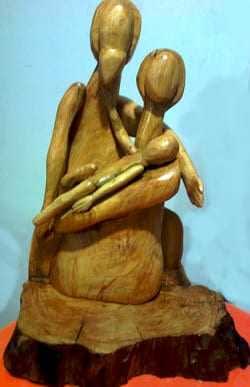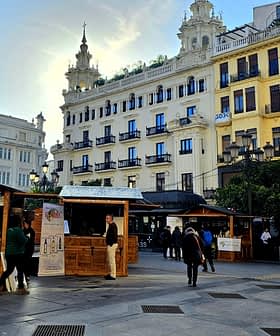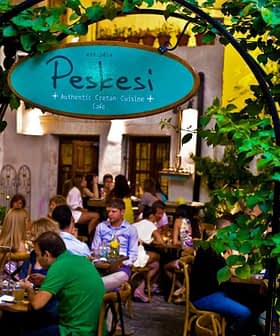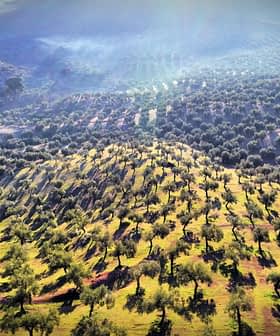
“You need to adapt to what’s in front of you.” That’s not Josep Gasol Pujol’s philosophy for life, but for woodcarving, and particularly for working with olive tree wood.
For 26 years it’s been his hobby and he shared his flair for it in a free workshop at the Extra Virgin Olive Oil Exhibition — Fira de l’Oli — held in the Catalan district Les Garrigues in January.
The trick is to work with the natural form of the wood — which in the case of old olive trees is usually gnarled and has various holes, Gasol said. He was working with a piece of wood he estimates to be about 350 years old, though it’s hard to be precise as the growth rings of the evergreen olive tree can be hard to discern. It came from the underground part of an Arbequina olive tree felled to make way for irrigation. Where some might have seen only a heavy stump, he saw a reclining woman and has named this demonstration piece, still a work in progress, ‘Bella’.
A tough but careful touch needed
Olive tree wood is so dense it almost doesn’t float in water, so Gasol has to be firm but also fastidious with his chisel and hammer because any knots in olive wood come out very easily. He starts by planing the bottom of the wood to give it stability then examines its form to decide where to work. When finished carving he goes over the wood with sandpaper before applying at least three coats of varnish, more if the wood is very porous.
Why to fell wood in the right lunar phase

Gasol uses only the slow-growing wood of his native district Les Garrigues, in the province of Lleida, in inland Catalonia. One of the many reasons he loves olive tree wood is that unlike that of other trees, such as pine, it doesn’t expand or shrink much with the weather. He prefers older wood because it is drier and easier to cut and said wood worms, though present, are not a problem if the ancient woodcutter wisdom of felling a tree only at old (waning crescent) moon is adhered to.
Gasol said an olive tree trunk needs to dry out for at least a year before being suitable for carving. He was working with wood from the large neck of the trunk which lies underground and to which the olive tree’s suckers and extensive yet fairly superficial roots attach. This part carries more moisture and needs longer to dehydrate.
Olive wood also good for heating, cooking and kitchen ware
Olive (Olea europaea) tree wood produces a lot of calories when burned and is used by some in the district to hear their homes. It also imparts a pleasant flavor when used to cook meat, Gasol said. While others like to convert the richly-grained hardwood into cutting boards, kitchen utensils, carved bowls, and fine furniture, his passion has always been sculpture. He is entirely self-taught, learning about form from moulding clay as a child.
Most of Gasol’s carvings are commissioned but he also makes about ten a year for exhibitions around Spain. One of his works, ‘El Crist del Cantacorps’, was shown in New York in 2007. Each figure, carved in his free time, takes about a month and a half. He is currently working on three sculptures to show at the Salón de Arte Antiguo y Moderno in Barcelona next month.








